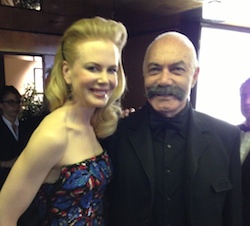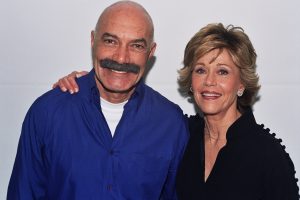The third American big-screen rendition of Victor Hugo’s classic novel, Bille August’s Les Miserables is an emotionally powerful, handsomely mounted production of a story that had been filmed in Hollywood twice before, in 1935 by Richard Boleslawski and in 1952 by Lewis Milestone.
The superb international cast includes a terrific Liam Neeson, as the reformed convict Valjean, and Geoffrey Rush, in his first role since winning an Oscar, as the obsessive inspector Javert. Though the romantic, Romeo-and Juliet-like plot appears mostly in the last reel, Columbia could use it to allure younger audiences to a period epic that naturally holds stronger appeal for older and more educated viewers.
A classy entertainment that does full honor to its source, this early summer release should play well as counter-programming to the season’s more typical action-adventure fare.
Hugo’s seminal 19th century novel continues to intrigue new generations of artists and audiences: in addition to the three American movies, there have been a number of TV adaptations, Italian and French film versions (most recently by Claude Lelouch
with Jean-Paul Belmondo), and a long-running musical which is still playing all over the world.
Most film versions begin with the trial of Valjean and his imprisonment in Toulon for committing a minor crime, stealing a loaf of bread. In this adaptation, scripter Rafael Yglesias starts with Valjean being released on parole after enduring 20 years of hard labor and cruelty. The harsh treatment in jail has made Valjean an animal, a brute with strong survival instincts but no sense of morality. The only things he can rely on are his instinctive wit and sheer physical strength.
In the first sequence, Valjean, on his way to Dijon to report for parole, stops at a bishop’s house, where he’s amazed to be treated with respect. Nonetheless, incapable of trusting anyone, he steals the silverware and runs away. Caught by the police and brought back, he’s even more astonished when the bishop claims the silverware was a gift and, as further proof of Valjean’s innocence, hands him two silver candlesticks. In return, the bishop asks Valjean to be kind and help others, whereupon an inner moral odyssey begins, one that forces Valjean to wrestle with his own conscience.
Story then jumps to 1822, with a reinvented Valjean serving as the humble and popular mayor of Vigau, a small, thriving village, where he also runs a profitable factory. First encounter with former Inspector Javert occurs in this peaceful town, when the strict lawman joins the local police. Suspicious of Valjean’s true identity, Javert later recognizes him as a convict when he sees him use his extraordinary force to rescue a factory worker almost fatally trapped under a cart. Infuriated, Javert goes to Paris and demands that Valjean be denounced, but there is no sufficient proof.
Central chapters concern the tender, caring relationship that evolves between Valjean and Fantine (Uma Thurman), a woman dismissed from her factory job on moral grounds when it’s disclosed that she has an illegitimate daughter. Malnourished, she resorts to prostitution and later falls ill, when Javert unjustly arrests and tortures her. On her deathbed, Fantine makes Valjean promise to rescue her daughter Cosette and raise her as his child.
Switching to a decade later, third and most dramatically eventful act depicts the life of Valjean with Cosette (Claire Danes), as a young woman seeking her own independence. Set around the tumultuous events of the July 1832 Revolution, tale introduces Marius (Hans Matheson), a militant student with whom Cosette falls in love. Faithful to the book, last sequence occurs at the banks of the Seine River, when Valjean and Javert fatefully face each for the last time.
Scripter Yglesias violates the massive, discursive book, in which for long stretches (and hundreds of pages), one of the two characters disappears from the scene. Instead, to increase dramatic tension, he arranges for periodic encounters between them. Scripter also underplays the political context which is more overt in the book, but in the film plays prominently only in the last reel.
August’s film is structured and presented in a way that makes Hugo’s thematic concerns of love, forgiveness and redemption palatable to contempo audiences. Since it’s impossible to tell the whole story, the focus is on Valjean’s struggle toward goodness and peace with himself, and the cat-and-mouse relationship between him and Javert as adverse yet not entirely opposite personalities.
This version emphasizes more than previous ones the fact that both men were raised in the galleys (Javert’s mother was a prostitute, his father a criminal) and that ultimately both live in fear: Valjean of getting caught, Javert of becoming a criminal. Nonetheless, the story is not about good vs. evil, but about two men who differ in their psychological make-up and attitude toward life, with Javert rigidly upholding the law, holding there are only two classes of citizens: law-abiders and law-breakers.
Though Yglesias and August make a special effort to bring to the surface the more universal aspects of Hugo’s book, their film offers its own fascinations in detailing the zeitgeist, specifically the theories that prevailed regarding human nature, biological vs. cultural determinism, the attitude of society toward outcasts, above all the inherent tension between the power of conscience and the rigid rule of the law.
After a couple of disappointing assignments (The House of the Spirits, Smilla’s Sense of Snow), August is back on terra ferma with Les Miserables, arguably his most ambitious film, one that in dramatic impact recalls his excellent work in the prize-winning Pelle the Conqueror and The Best Intentions. The movie is directed smoothly and passionately, without the excessively sentimental and preachy tones of the previous versions.
An actors’ director, August extracts forceful, multi-shaded performances from his two leads, Neeson and Rush, whose work here avoids the declamatory stiffness that marked the acting of Fredric March (miscast as Valjean) and Charles Laughton (as Javert) in the 1935 film. Neeson’s combination of physical stature and lyrical expressiveness makes him a natural to play the tormented convict.
Rush judiciously avoids playing Javert as an outright villain, stressing instead the self-inflicted torture of a man fighting his own demons. Perhaps the greatest compliment to pay this adaptation is that it doesn’t contain a single weak performance: Thurman is touching in a difficult, atypical role; Danes is charming and likable as the daughter; Matheson is handsome and credible as a revolutionary idealist.
Technical credits are roundly impressive with Jorgen Persson’s sweeping widescreen lensing (in and around Prague and Paris), Janus Billeskov-Jansen’s smooth editing, Anna Asp’s lavish production design, Gabriella Pescucci’s rich costumes and Basil Poledouris’ effective score.
Credits
A Sony Pictures Entertainment release of a Columbia Pictures presentation of a Mandalay Entertainment presentation of a Sarah Radclyffe and James Gorman production. Produced by Sarah Radclyffe and James Gorman. Co-producer, Caroline Hewitt. Directed by Bille August. Screenplay, Rafael Yglesias, based on Victor Hugo’s novel. Camera (Technicolor, panavision wide screen), Jorgen Persson; editor, Janus Billeskov-Jansen; music, Basil Poledouris; production design, Anna Asp; art direction, Peter Grant; costume design, Gabriella Pescucci; sound (Dolby/SDDS), David John; assistant director, Guy Travers; casting, Leonora Davis.
MPAA Rating: PG-13. Running time: 131 min.
Cast
Valjean………………Liam Neeson
Javert……………..Geoffrey Rush
Fantine………………Uma Thurman
Cosette……………..Claire Danes
Marius……………..Hans Matheson
Captain Beauvais…Reine Brynolfsson
Bishop……………..Peter Vaughan
Cosette (aged 8)………Mimi Newman










